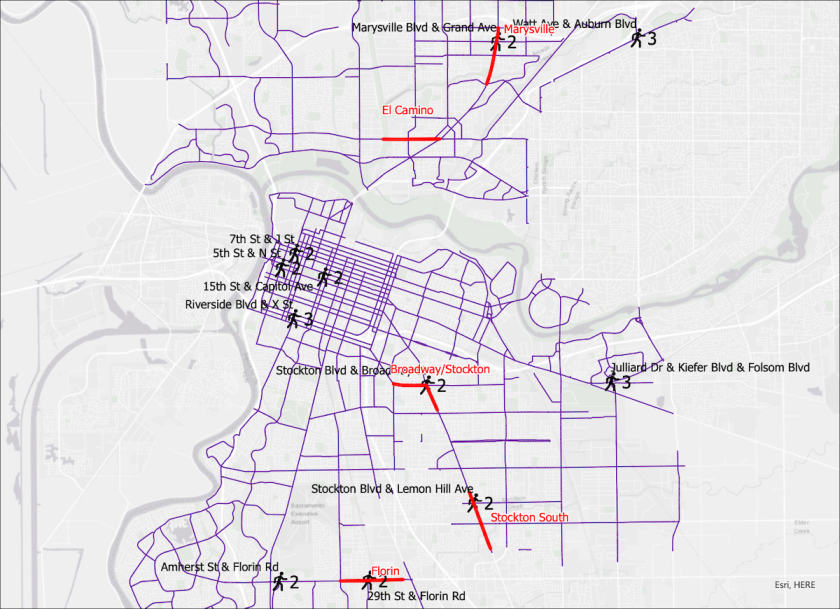The Walkable City book club will meet again this Wednesday at Lefty’s Taproom, 5610 Elvas Ave, in east Sacramento, 6:00PM to about 7:30PM. If you can’t arrive at the beginning, or need to leave sooner, that is fine, your presence is welcome for whatever you can make. Though some of the people in the book club group are ‘walkable city’ advocates, there are also people who are simply interested in making Sacramento more walkable, and more safe. Everyone is an expert when it comes to identifying what aspects of our transportation system don’t work for them personally, and the others are happy to fill you in on what we call the problems and possible solutions to those problems. We also celebrate the walkable nature of some places in Sacramento. Though many of us live in the City of Sacramento, we also discuss areas throughout the region. So please join us!
Walkable City: How Downtown Can Save American, One Step at a Time, 10th Anniversary Edition, Jeff Speck. Sacramento County Library has one copy of the 10th edition, waitlisted, and one copy of the 2012 edition, available. It is of course also available from your local bookstore, though it may need to be ordered, and Amazon has Kindle, paper and hardback versions.
The Walkable City book club: Step 5: Protect the Pedestrian section has eight parts:
Read More »


 Curb extensions, also called bulb-outs, have been installed on all four corners at the intersection of 16th Street and N Street in midtown Sacramento. The extensions are the width of the parking lanes along both these streets. N Street has bikes lanes, which are not restricted by the extensions, while 16th Street does not have bike lanes, and won’t until the street is reconstructed into a more complete street at some unknown point in the future.
Curb extensions, also called bulb-outs, have been installed on all four corners at the intersection of 16th Street and N Street in midtown Sacramento. The extensions are the width of the parking lanes along both these streets. N Street has bikes lanes, which are not restricted by the extensions, while 16th Street does not have bike lanes, and won’t until the street is reconstructed into a more complete street at some unknown point in the future.

